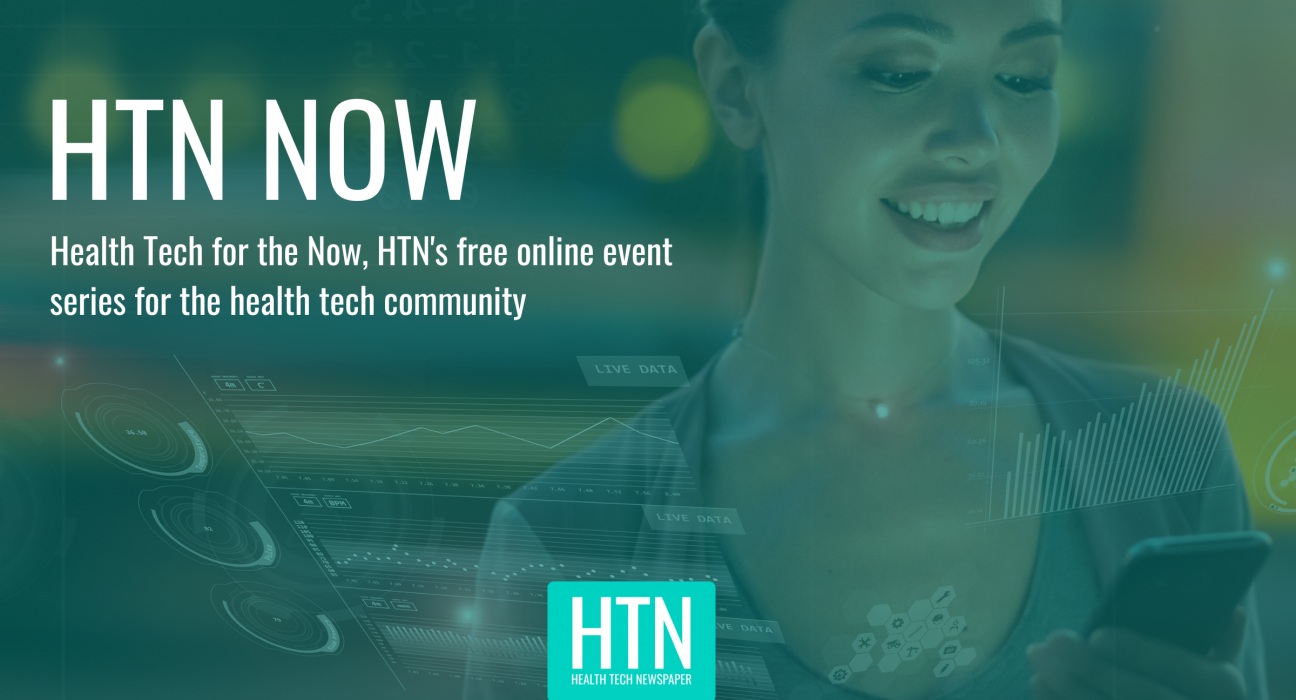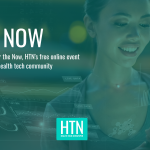
Following on from the latest addition to our feature series exploring electronic patient records and how to add value – an exploration of the current and future value of EPR solutions, available to read here – we’re taking a look at recent news, views and research in this area.
Firstly, we share EPR-related news reported by HTN over the past weeks.
This month, HTN explored the new maternity strategy from Bedfordshire Hospitals NHS Foundation Trust, which spans 2024 – 2029 and shares plans to launch a maternity end-to-end EPR in 2025. We looked into the recently released strategy from The Queen Elizabeth Hospital King’s Lynn NHS Foundation Trust, running until 2030 and indicating how the trust plans to implement an EPR programme with the aim of improving the “currently low” HIMSS and INFRAM scores to level five and three respectively. September has also brought the news that East Sussex Healthcare NHS Trust awarded a 10-year contract for a community electronic patient record system with an estimated value of £3,060,870 to The Phoenix Partnership (TPP).
We reported on another EPR supplier selection in late August, when York and Scarborough Teaching Hospitals NHS Trust and Harrogate and District NHS Foundation Trust announced plans to implement Nervecentre’s loud-native platform for both trusts. August saw East and North Hertfordshire NHS Trust launch maternity EPR My Pregnancy Notes at Lister Hospital’s maternity unit; and NHS England issued a prior information notice worth £18 million, signalling the beginning of market engagement on an EPR system to capture health data and records across the health and justice area. Also in August, Sussex Community NHS Foundation Trust awarded a 10-year contract extension for an electronic patient record system from TPP.
Looking further back, some of key EPR updates from across the industry this year have included Norfolk and Waveney Acute Hospitals Collaborative securing £88 million in funding for their shared EPR with the full business case approved. Salisbury NHS Foundation Trust, Great Western Hospitals NHS Foundation Trust and Royal United Hospitals Bath NHS Foundation Trust announced plans to implement their own shared EPR; North London Mental Health Partnership shared that it will move to a single EPR system for the partnership; and NHSE announced intention to provide ‘Tiger Teams’ to support EPR delivery, defined as “a partner to create an experienced, multi-skilled, rapid response intervention service”.
We’ve also explored news and updates around EPRs on a global scale over on our sister site, HTN International. We reported how the Royal Columbian Hospital in New Westminster, Canada, recently went live with its new electronic health record; and a project in Eindhoven, The Netherlands, which focuses on organising delivery of data across healthcare organisations utilising a specific EPR.
We also highlighted a non-profit partnership in the USA aiming to help develop “affordable and tailored” electronic health record strategies for providers in underserved communities; and also in the US, the launch of a new EHR-agnostic health information exchange network to facilitate health data sharing between organisations.
Will the EPR market change in the next three to five years?
To explore views from the health tech community, we put a question to our audience via LinkedIn and asked: do you think the EPR market will change in the next three to five years?
There was a clear leader, with 50 percent of voters sharing the belief that more suppliers will enter the market over that time period; these votes came in from roles such as chief clinical and information officer, digital culture and change lead, and chief information officer.
29 percent expect the market to see fewer suppliers by 2029, including voters with job titles such as chief digital information officer, associate director of digital transformation, and clinical documentation workstream lead.
In last place, 21 percent of our voters believe that the number of suppliers on the market will remain the same, coming from roles such as deputy chief nurse, digital health consultant and clinical systems development team leader.
On a related note, we recently asked another question of our audience. Where should digital investment go in the short term: to digitising or removing paper, cross-organisational workflows, patient-facing tech or data and analysis tools? Digitising and removing paper came out on top, with 35 percent of the vote.
Earlier this year, another poll gathered perspectives on how many GP clinical systems (core electronic health record) suppliers there will be in five years’ time: below three, four to six, or more than seven? Click here to see how our readers voted.
Insights from health tech experts
Here at HTN we host a busy schedule of live virtual events (HTN Now) through which we are joined by a wide variety of health tech experts to discuss key topics and share learnings across the industry.
In the summer, we hosted a panel discussion on connecting care and extending EPR value through mobility and connected devices, with the conversation covering topics such as strategies for widening the benefits of the EPR; how to understand clinical workflows in relation to the EPR; and how to utilise mobile and connected devices for a better user experience.
During the panel, Blackpool Teaching Hospitals’ chief nursing information officer Louise Clarkson shared her views on what it means to have mobility in relation to productivity with an EPR, as well as what it means when these devices are unavailable or do not work correctly. Louise acknowledged that new projects can bring investment and a sense of excitement; but when a project moves into business-as-usual, there are often issues with equipment starting to break or with funding not covering necessary replacements. “It’s a vicious cycle,” she said. “You’ve got to maintain the mobile devices in the background, they have to be working, or people lose confidence in the system and disengage. They need to be trained properly at the start too, or else disengagement will happen there. It helps when you’ve got a really strong business continuity plan, so that if an outage happens, staff are confident in knowing how to keep going.”
Another EPR-focused panel this year revolved around planning for EPR optimisation along with the impact of engagement and leadership when it comes to major programmes such as EPR implementation and change. Sharing insights from Cornwall and Isles of Scilly ICB and the Royal Cornwall and Cornwall Partnership Trust, executive CIO Kelvyn Hipperson reflected that when it comes to ensuring the representation and engagement of staff across different roles and departments, this “tends to be done quite well in big programmes, in terms of organising workshops and getting all of that input. The trick is finding ways to carry that through into the operational service delivery”. Ways of doing this in Cornwall include ward walkthroughs to chat to team members, and getting the training team to participate in collecting that kind of feedback. “I always say that feedback is the lifeblood of what we do,” Kelvyn said, “because we can’t fix things unless we know.”
From Healthy Wirral Partnership, digital lead Paul Charnley said that his organisation has “a formal feedback structure, because our digital programme board has transformed itself into a digital services board, where we can account for our services as well as for project deliverables. I think that helps us in a more formal sense to understand where we sit. One of the key things is digital maturity assessment feedback, and the key there is not for people like Kelvyn and I to sit in a room and sign it off, but to get people’s opinions of where we are on those questions.”
In our recent panel focusing on how health and care can tackle interoperability, Kate Warriner – chief transformation and digital officer at Alder Hey Children’s NHS Trust – shared an example of a project in this area. “Internally, there is an example of an electronic anaesthetic record which is a specialist system in place for patients undergoing theatre procedures. It has enabled us to bring our drugs and vital signs into our electronic anaesthetic record, reducing the need for what used to be a big piece of paper with lots of manual inputting. That then integrates into our EPR.”
Making people’s jobs easier for them “is such an important thing to keep in mind,” Kate added. “I think integrating with your day-to-day systems is the best approach, because if you can make your interoperability feel seamless, it just becomes part of business-as-usual for your team. The end user isn’t needing to log onto multiple systems. Our shared care system integrates with our EPR, for example; so with a single click of a button from within their usual system, our clinical colleagues can access information from other settings such as primary care.”
The impact of EHR “nudges” on care quality and outcomes
Next, let’s take a look at some recent research into EHRs, published last month in Jama Network Open.
Through a systematic review of 54 randomised clinical trials, the study ought to explore the association between electronic health record “nudges” – described as “interventions that subtly guide individuals toward specific behaviours while preserving freedom of choice” – and care quality and outcomes in primary care.
Providing context, the authors note how EHRs offer an opportunity to present nudges to clinicians in their workflows along with allowing health systems to monitor the effectiveness of implemented nudges across specialties and clinician types. Nudges can also potentially benefit clinicians by providing reminders or offering pre-selected options at decision points for review or provide extra contextual information at the point of that decision.
The researchers found that most studies (79.6 percent) involved in the review used EHR nudges to facilitate the uptake of a targeted behaviour, whilst the remaining 20.4 percent used nudges to facilitate a decrease in a targeted behaviour. The association with improved outcomes was higher among the first group (54.7 percent versus 9.1 percent).
To examine the relationship between nudges and care quality, the study identified “measure types” from a quality framework which included patient safety, effectiveness, patient-centredness, efficiency and descriptive (such as documentation patterns).
Results were varied, with the most positive impacts from EHR nudges found around descriptive or patient-centredness outcome measures. Regarding descriptive measures in particular, “most studies found that EHR nudges were associated with improvements of various documentation and care planning patterns.” For patient-centredness, overall EHR nudges were found to be associated with improvements in counselling rates for exercise, diet and blood pressure.
For effectiveness, EHR nudges were associated with improvements for 19 of the 48 measures; for patient safety, there were “few” positive associations between nudges and an impact on patient safety, with only four out of 12 studies identifying an association. Regarding efficiency, the review examined four studies assessing efficiency measures, but found that EHR nudges were not associated with improvements.
Discussing their findings, the authors state that whilst EHR nudges “may improve specific dimensions of health care quality”, there were “less consistent findings” in other areas. Looking at the more positive results around descriptive measures in particular, the study states that “EHR nudges may facilitate improvements in clinicians’ documentation patterns, such a completeness or accuracy”; but this pattern was less consistent for studies targeting clinicians’ ordering behaviours.
Wider studies exploring clinician adherence to EHR nudges suggest that primary care clinicians have increasingly adopted templates to support their documentation, the authors add; this could suggest that “higher clinician acceptance of a nudge or its fit in the workflow may be important factors that influence the effectiveness of the nudge.”
EHR-based nudge interventions “are a promising strategy for improving evidence-based care delivery in primary care”, the authors conclude, and have the potential to change specific dimensions of health care quality. However, to strengthen the evidence for nudge interventions, they recommend that additional implementation studies take place to better understand the context of when nudge interventions work.
Citation: Nguyen OTKunta ARKatoju S, et al. Electronic Health Record Nudges and Health Care Quality and Outcomes in Primary Care: A Systematic Review. JAMA Netw Open. 2024;7(9):e2432760. doi:10.1001/jamanetworkopen.2024.32760





